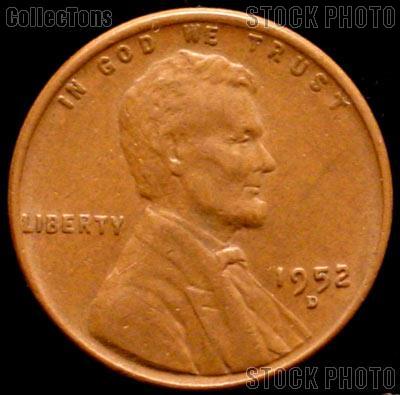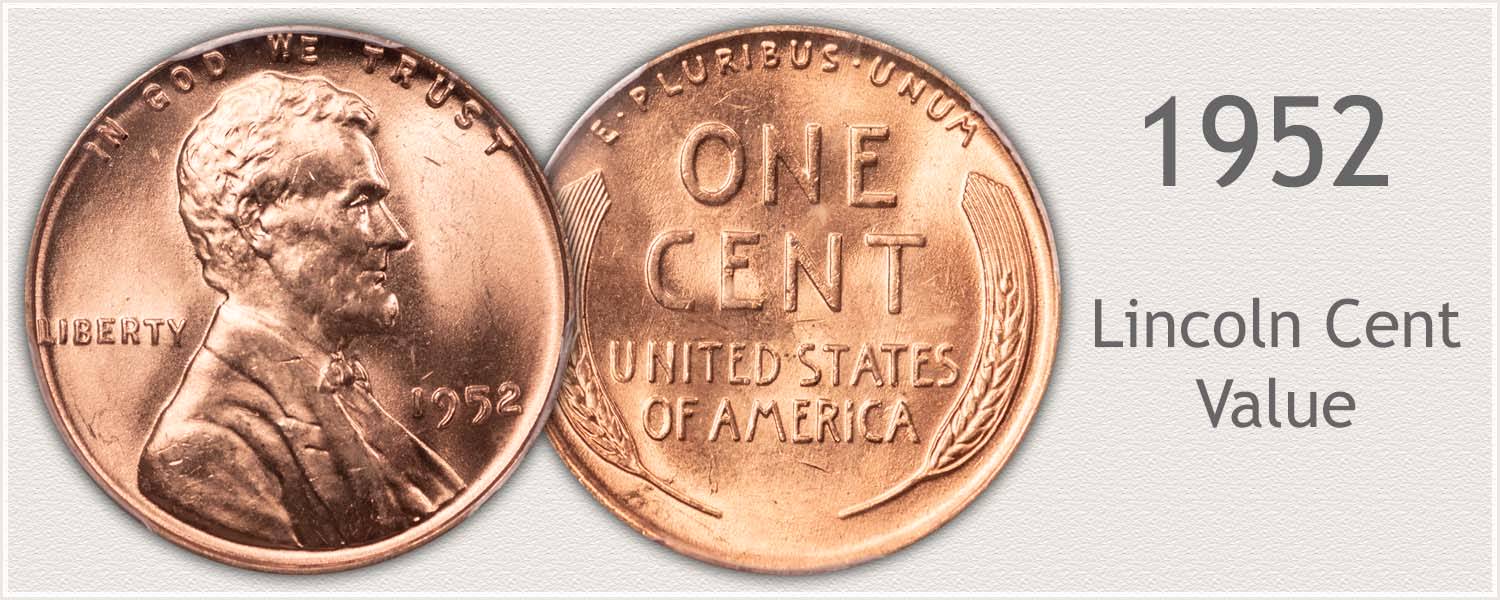1952 D Wheat Penny
Image source: Wikimedia Commons

Off-center strikes are a highly visible error leading to premium values. A 1952-D wheat penny, normally a modestly priced coin, is now attracted to specialty collectors. An off-center penny is created by a misalignment during the striking process. The 1952 D Wheat Penny was minted in 1952 at the Denver Colorado mint. In 1952 there were 746,130,000 1952 D pennies minted in all. Of course this figure doesn’t reflect the mint proofs that could have been minted that year at the Denver mint and only includes the amount of 1952 D Wheat Pennies that were poured into circulation. The 1955 Double Die Wheat Penny can fetch around $1,500.00 for a very fine version of the coin. In other words, one that is in exceptional shape. 1959 D Wheat Penny. The 1959 D Wheat Penny has proven to be one of the most controversial coins to mysteriously show up on the coin marketplace in years. Many experts believe the coin to be.
The Value ofthe1957 D WheatPenny
In 1957, a total of 1,051,342,000 1957 D wheat pennies were minted at the Denver Colorado Mint. The data were solely based on the total number of 1957 D pennies poured into circulation, which means it does not include coins that had been destroyed, melted, and those which were never released.


The obverse (“heads” side) and reverse (“tails” side) were both designed by Victor David Brenner, a Litvak-American sculptor known as the US Lincoln Cent designer.
The obverse contains the portrayal of the former United States President Abraham Lincoln with “Liberty” on the left and on top says, “In God We Trust”. Below the year “1957” is a letter “D” mintmark, which indicates that the coin was struck in Denver Mint.
'Every Lincoln penny produced between 1909 and 1958 is now deemed obsolete, which means they are truly worth holding onto.'
The reverse features a pair of wheat ears that is why it is also called the Lincoln Wheat Ears cent. These pennies were made of 95% copper and only 5% tin and zinc, that is why each of them weighs 3.11 grams like the other copper pennies.
Denver Colorado Mint
The Denver Mint is one of the highly popular branches of the United States Mint, as well as the San Francisco Mint and the Philadelphia Mint. It has been striking US coins since February 1, 1906, and the coins that they produce bear a letter “D” mint mark.
The Denver Colorado Mint is the single largest manufacturer of coins in the world. Many years ago, there was a branch mint which was called the Dahlonega Mint that also had the letter “D” mintmark. However, they did not last long, so it is safe to say that every coin with the “D” mintmark after the year 1906 were struck in the Denver Colorado Mint.
The“BIE” Error
Coin collectors have been posting their pictures and videos on the Internet, showing that they have a 1957 D wheat penny with the so called “BIE” error, wherein there was a die break between “B” and “E”, which seems to be a letter “I”.
The other coins have the lower part of the letter “B” in the word “LIBERTY” completely filled in. There are coins that also have the number “9” on the date filled in. These happened due to a die clash. When the dies come together without the planchet in the coining chamber, the dies transferred part of their design into the other.
Looking at the number of people who have these “error” coins means they are pretty common. And just to clear it up, these are actually NOT errors – they are just die chips.
In addition, not only the 1957 D wheat pennies have the same characteristics.
These die chips can be seen in the 1956-1958 wheat series. But this is not to say that the die chips do not make a difference. There are interested coin collectors who offer the “BIE” coins for $5 to $7 per piece. The filled letters or numbers do not add more value to the coin, though.
How Much is the 1957 D Wheat Penny Worth?
Nowadays, copper is considered one of the most precious metals.
And even if the 1957 D wheat pennies are made of 95% copper and only 5% tin and zinc, coin collectors value a coin depending on its condition and level of desirability, and not specifically on what it is made of.
The less worn your coin is, the more it is worth. The desirability is usually based on the total amount minted of a particular coin. Basically, pennies with the low mintage are most likely worth more than those with the higher mintage.
Currently, the 1957 D wheat pennies in average condition are worth 15 to 60 cents, while the coins in pristine condition are valued as much as $1.
It really does not matter if your coin is of high value or not.
Keep in mind that all Lincoln pennies produced between 1909 and 1958 are now deemed obsolete, which means they are truly worth holding onto. As these coins become scarcer, their value also increases especially to those coin collectors who share the same goal, that is, to gather complete sets of these highly popular pennies.
References:
1958 D Wheat Penny
1952 D Wheat Penny Error Cracked Head Value